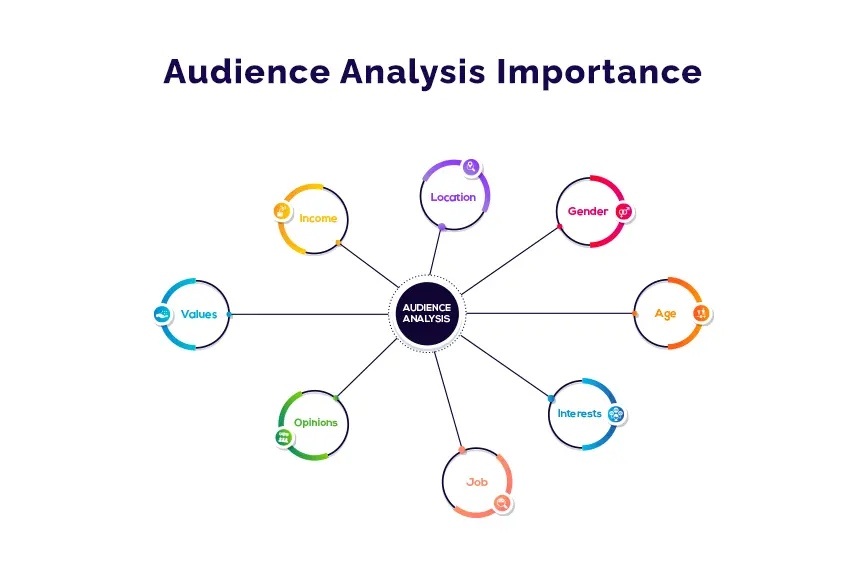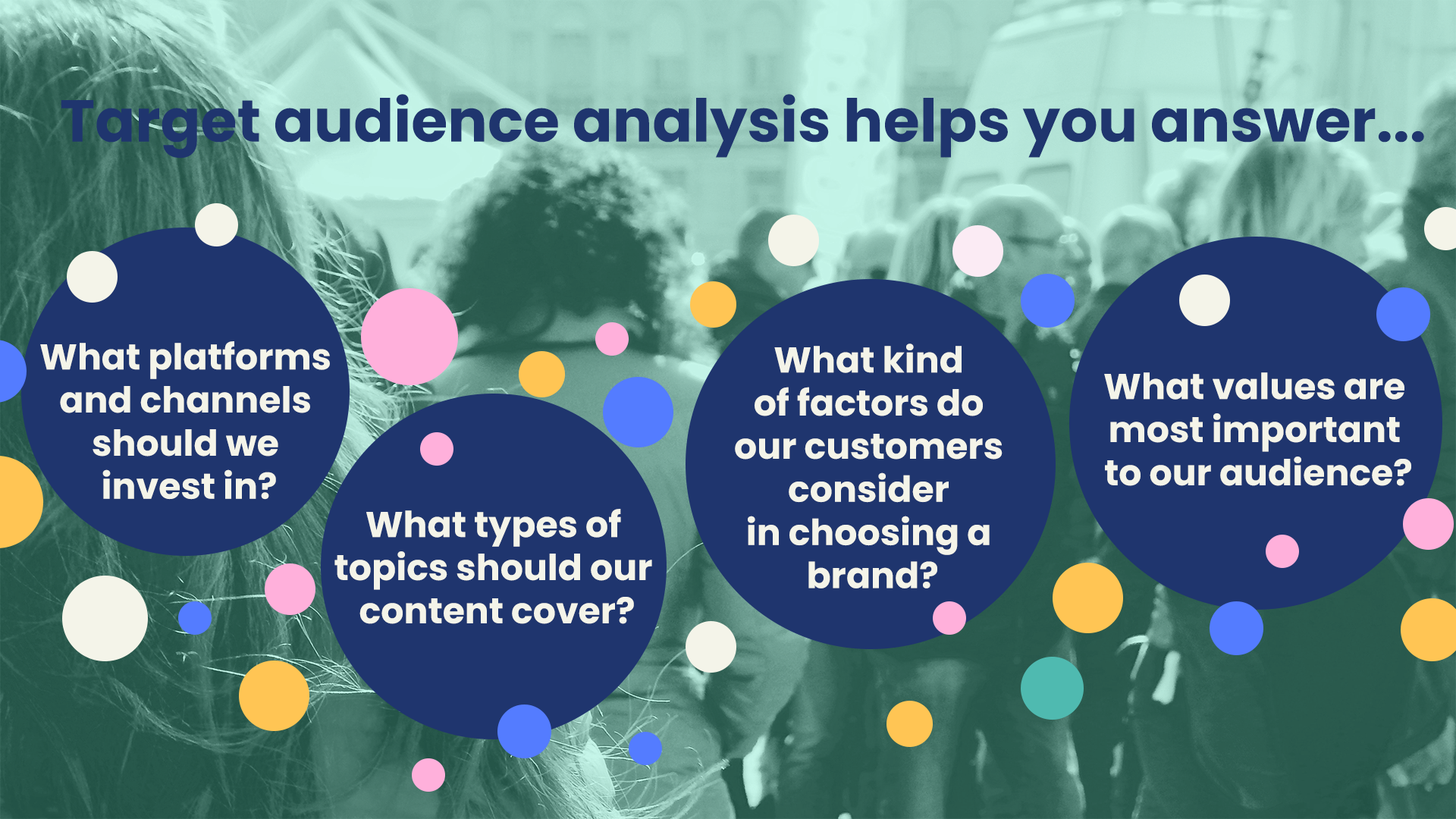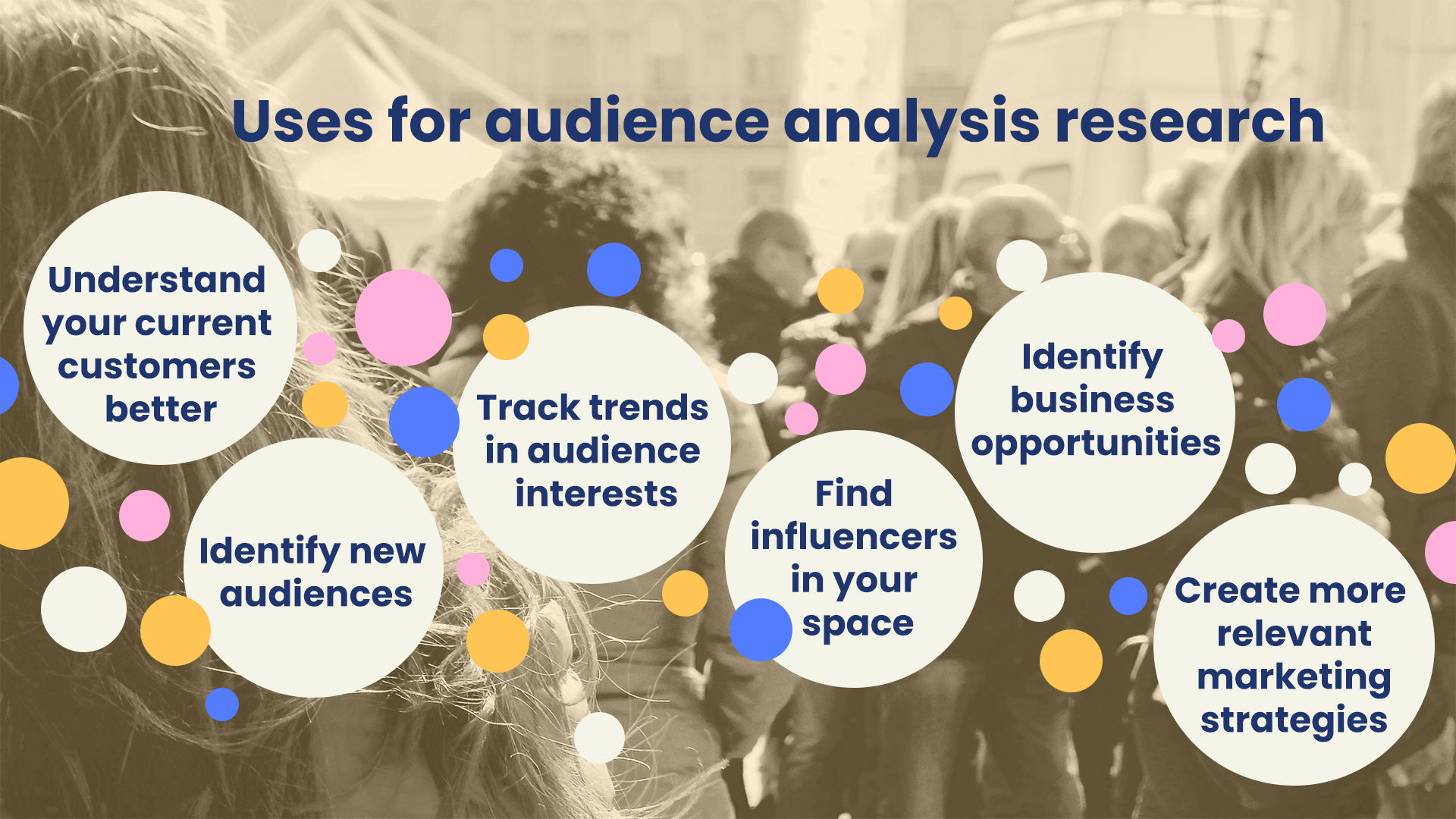Importance Of Audience Analysis
Audience analysis is crucial for understanding your target market and tailoring your content to their needs and preferences. It helps you identify key demographics, behaviors, and motivations, enabling you to create content that resonates with your audience and drives engagement and conversions.
In today’s digital age, where attention spans are shorter than ever, capturing and holding your audience’s attention is vital. By conducting a thorough audience analysis, you can gain insights into their interests, pain points, and desires. This knowledge allows you to craft compelling content that addresses their specific needs, making your brand more relevant and valuable to them.
Additionally, audience analysis enables you to identify gaps in the market and discover new opportunities to reach untapped segments. In short, understanding your audience is the foundation for successful content strategy and effective communication.

Credit: slidebazaar.com
Improving Communication Effectiveness
Effective communication is the key to building strong relationships with your audience. To create compelling content that resonates with your readers, it’s crucial to understand their needs, preferences, and demographics. By conducting audience analysis, you can gain valuable insights that enable you to tailor your messaging and delivery to match their expectations. In this article, we will explore the importance of audience analysis in improving communication effectiveness. Let’s dive in!
Identifying Key Demographics
Understanding your audience’s demographics is a fundamental step towards effective communication. By identifying key demographic factors such as age, gender, location, education level, and occupation, you can create content that caters specifically to their interests and preferences. For example, if your target audience consists primarily of young professionals, you can use a more informal tone and focus on subjects that are relevant to their career growth.
Let’s take a look at an example of how demographic analysis can help improve communication:
| Demographic | Key Insights | Content Approach |
|---|---|---|
| Age | 25-35 years old | Use a conversational tone and modern references |
| Gender | Male | Address topics that are of interest to male readers |
| Location | Urban areas | Include examples and scenarios that resonate with urban living |
Understanding Audience Needs
Another crucial aspect of audience analysis is understanding their needs and motivations. What are the challenges and pain points they face? What solutions are they seeking? By answering these questions, you can create content that directly addresses their needs, positioning yourself as a valuable resource. For instance, if your audience is looking for practical tips to improve their productivity, you can offer actionable strategies and techniques in your content.
Here are some examples of audience needs and how to address them:
- Need: Learning new skills
- Approach: Provide step-by-step guides and tutorials
- Need: Keeping up with industry trends
- Approach: Share insights, case studies, and expert opinions
- Need: Saving time and increasing efficiency
- Approach: Offer productivity hacks and time management techniques
By conducting a thorough audience analysis, you can tailor your content to meet the specific needs of your target audience, resulting in more engaging and effective communication. Take the time to understand who you’re speaking to, and you’ll see the difference it makes in the response and engagement you receive.

Credit: www.scribd.com
Tailoring Messages
In today’s fast-paced digital world, effectively reaching your target audience is paramount to success. To achieve this, tailoring messages based on a thorough audience analysis plays a crucial role. By understanding your audience’s needs, desires, and preferences, you can craft persuasive content that resonates with them and adapts your communication style accordingly.
Crafting Persuasive Content
Creating persuasive content requires a deep understanding of your audience and their motivations. By analyzing their demographics, interests, and psychographics, you can develop compelling messages that speak directly to their specific needs. A well-crafted message that addresses their pain points and offers valuable solutions has the power to captivate and engage your audience, influencing their decision-making process.
Adapting Communication Style
Each audience has its unique communication style and preferences. Adapting your communication style to resonate with your target audience is key to effective message delivery. Are they more formal or casual in their communication? Do they prefer concise and straightforward information or do they appreciate storytelling? By aligning the tone, language, and format of your content with your audience’s preferences, you can establish a connection and build trust, increasing the likelihood of a positive response.
Enhancing Marketing Campaigns
Enhancing marketing campaigns requires a deep understanding of your target audience. By conducting thorough audience analysis, you can unlock valuable insights that will help you create more personalized and effective marketing strategies. In this section, we will explore two important aspects of audience analysis that can greatly enhance your marketing campaigns: Segmenting Target Audience and Determining Optimal Channels.
Segmenting Target Audience
Segmenting your target audience is a fundamental step in audience analysis. It involves dividing your audience into specific groups based on common characteristics, such as demographics, behaviors, interests, or preferences. By segmenting your audience, you can create tailored marketing messages that resonate with each group, increasing the likelihood of engagement and conversion.
Here are some key benefits of segmenting your target audience:
- Allows you to deliver more personalized and relevant content to different customer groups.
- Enables you to prioritize your marketing efforts and allocate resources effectively.
- Helps you identify niche markets that might have been overlooked.
- Allows for more precise targeting, leading to higher conversion rates.
Determining Optimal Channels
Once you have segmented your target audience, the next step is to determine the optimal channels to reach each group effectively. With so many marketing channels available today, it’s essential to understand where your audience prefers to consume information and engage with brands. By selecting the right channels, you can maximize the visibility of your marketing messages and increase the chances of achieving your campaign objectives.
Here are some factors to consider when determining the optimal channels for your marketing campaigns:
- Research: Conduct market research to identify the channels that align with your audience’s preferences and behaviors.
- Audience Insights: Leverage the data gathered during audience analysis to understand which channels your target audience is most active on.
- Competitor Analysis: Analyze your competitors’ marketing efforts to identify successful channels they are utilizing.
- Testing and Optimization: Continuously test different channels and measure the performance to determine the most effective ones.
Remember that the optimal channels for your marketing campaigns may vary depending on the characteristics of your target audience and the objectives of your campaigns. It’s crucial to monitor the performance and make adjustments as needed to ensure maximum impact.
Building Brand Loyalty
Understanding your audience is crucial in building brand loyalty. By conducting thorough audience analysis, you can gain valuable insights into their needs and preferences, allowing you to tailor your strategies and messaging to effectively engage and retain customers.
Connecting Emotionally
Building brand loyalty starts with connecting emotionally with your target audience. When customers feel a strong emotional connection with a brand, they are more likely to become loyal supporters and advocates. Emotions have a powerful impact on decision-making, and by tapping into the right emotions, you can create a lasting bond that keeps customers coming back for more.
One way to connect emotionally is by understanding your audience’s values and beliefs. By aligning your brand with causes and principles that resonate with your target market, you can create a sense of shared values. This not only strengthens the emotional bond but also positions your brand as a trusted ally.
Creating Personalized Experiences
Personalization is the key to winning over today’s consumers. When customers feel valued and understood, they are more likely to remain loyal to a brand. By analyzing your audience, you can gather important insights about their preferences, interests, and behaviors. This data can then be used to tailor the customer experience to meet their individual needs.
Personalization goes beyond addressing customers by their names in emails. It involves customizing content, offers, and recommendations based on their specific preferences. For example, a clothing brand could use customer data to suggest items that match their style or send personalized discounts for their favorite products. These personalized experiences make customers feel special and valued, leading to increased loyalty and repeat purchases.
Avoiding Costly Mistakes
An audience analysis is crucial to avoid costly mistakes. Understanding your target audience helps tailor your content to their needs, preferences, and interests, resulting in better engagement and increased conversions.
Minimizing Misinterpretation
In the world of communication, misunderstandings can often arise if the message is not properly conveyed or if it is misinterpreted by the recipient. When it comes to creating content, a crucial aspect of audience analysis is to minimize misinterpretation.
To avoid any confusion, it is essential to understand the mindset, knowledge, and language of your target audience. By doing so, you can tailor your message accordingly, ensuring that it is clear, concise, and easily understandable. This minimizes the risk of misinterpreting the information you want to convey.
Imagine a scenario where you are trying to promote a product or service to a specific group of customers. If your content uses technical jargon or complex terms that your audience is not familiar with, they might not fully grasp the benefits or features you are trying to highlight. This can result in missed opportunities, low engagement, and ultimately, a decrease in sales or conversions.
By thoroughly analyzing your audience, you can identify their level of understanding and adapt your content to meet their needs. This ensures that your message is accurately interpreted by your target audience, leading to a more effective communication strategy.
Preventing Offending Or Alienating Audiences
One of the most critical aspects of audience analysis is preventing the possibility of offending or alienating your target audience. There is nothing worse than unintentionally using language, imagery, or content that offends or ostracizes your readers.
In today’s diverse and inclusive world, it is essential to be mindful of potentially sensitive topics, cultural differences, and social norms. By taking the time to analyze your audience, you can tailor your content to be respectful, inclusive, and considerate of their values and beliefs.
| Key Points: |
|---|
| 1. Identify potential triggers or sensitive topics within your target audience. |
| 2. Use inclusive language that avoids stereotypes or offensive content. |
| 3. Focus on promoting diversity and equality in your content. |
By understanding your audience’s demographics, cultural background, and individual preferences, you can craft content that resonates positively with them. This not only helps you build a strong rapport with your readers but also prevents any backlash or negative feedback that may result from insensitive or offensive content.
In conclusion, conducting audience analysis is fundamental to avoiding costly mistakes in your content. From minimizing misinterpretation to preventing offending or alienating audiences, understanding your target audience allows you to create content that is relevant, engaging, and resonates with your readers’ needs and values.

Credit: resources.audiense.com
Frequently Asked Questions Of Importance Of Audience Analysis
Why Is Audience Analysis Important?
Audience analysis is important because it helps you understand your target audience’s needs, preferences, and behaviors, allowing you to tailor your content and marketing strategies to effectively engage and convert them.
How Does Audience Analysis Impact Marketing Campaigns?
Audience analysis impacts marketing campaigns by providing valuable insights that help marketers create targeted content, choose the right channels, and deliver personalized messages to the right audience, resulting in higher conversion rates and better ROI.
What Methods Can Be Used For Audience Analysis?
Various methods can be used for audience analysis, including surveys, interviews, social media listening, website analytics, and customer feedback. These methods provide valuable data and insights to understand your audience better and optimize your marketing efforts.
Conclusion
Understanding your target audience is crucial in establishing a successful online presence. By conducting an in-depth audience analysis, you can tailor your content to their needs, preferences, and expectations. This not only enables you to connect with them on a deeper level but also helps in driving organic traffic to your website and boosting conversions.
Remember, each audience is unique, so investing time and effort in audience analysis can significantly impact the success of your content marketing strategy. Take the time to truly understand your audience, and you’ll reap the rewards of higher engagement and increased visibility.




